Scuba Diving at Manta Point, Komodo National Park
We gathered around our adorable French divemaster to hear our second briefing of the day for Manta Point, Komodo National Park. I was so excited I could barely contain myself, but my enthusiasm waned as she began the briefing.
The currents were not ideal and our chances of spotting the famous Komodo manta rays were lower than she expected.
“No manta, no cry,” she told us in her thick accent. There were still plenty of other wonderful things to see, we were assured.
Spoiler alert: we saw six mantas on that dive. It was pretty much the best day of my life.

Essential Dive Site Info
Name: Manta Point (also known as Makassar Reef)
Location: Komodo National Park, Indonesia
Type of Dive: Drift
Level: Open Water
Average Depth: 12 m
Max Depth: 18 m
The dive center I went with was Blue Marlin and I had an overall good experience with them.
About Manta Point, Komodo
Manta Point, also known as Makassar Reef, is perhaps the most famous dive site in Komodo, and for good reason. It’s one of the best places to spot the incredible manta rays in the national park. The dive site is located in the middle of the Lintah Strait off the east coast of Komodo Island.
Obviously, the chance of seeing manta rays is a huge draw! In Komodo, you can see both reef mantas and giant mantas. They can be spotted all year round, but come between October and June for your best chance of swimming with them.
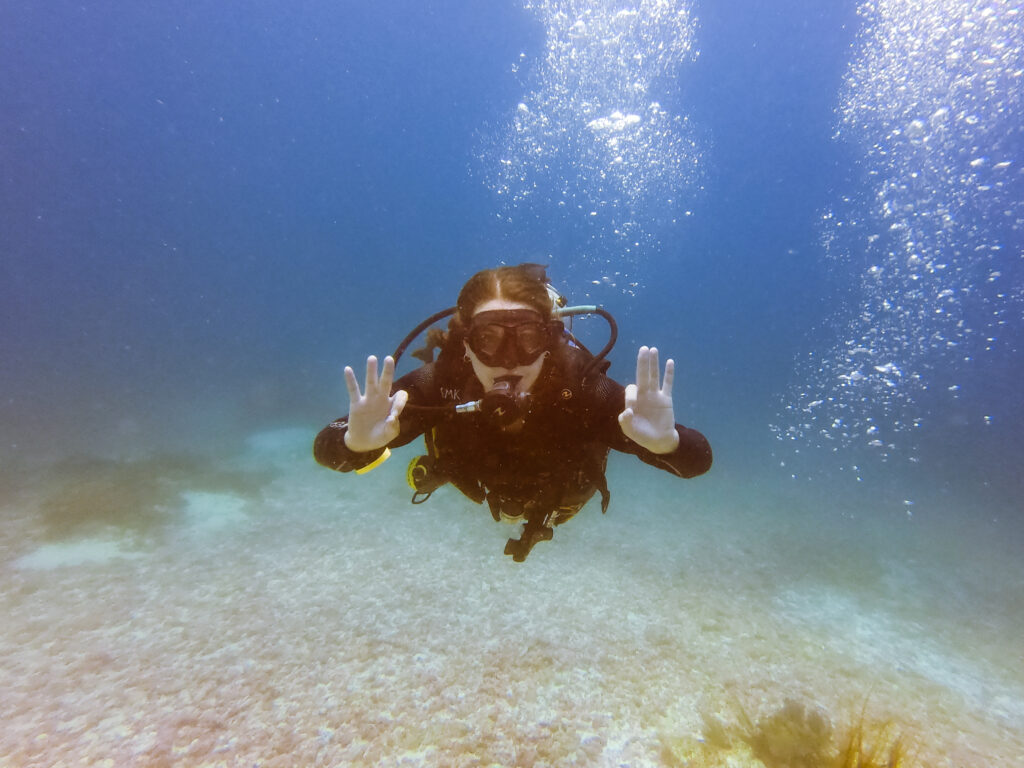
The conditions at Manta Point aren’t the best, but that’s actually why the mantas love it so much. The visibility is low compared to other sites because of the plankton that the currents bring in. Mantas are filter feeders, so this is basically their version of an all-you-can-eat buffet!
Manta Point is certainly not the most beautiful dive site in Komodo National Park since the strong currents make it difficult for corals to grow. The ocean floor is mostly a rubble field with some scattered coral gardens here and there.
Technically, this is a drift dive, but no need to worry if you don’t have much experience. Manta Point was only my 8th dive, but I still felt comfortable thanks to the site being so shallow. The current keeps a decent pace, but you can swim against it with a little effort. Your divemaster might also bring reef hooks along.
Whether you’re on a day trip or a liveaboard, diving is possible at Manta Point. Labuan Bajo, the national park’s gateway town, is less than an hour away by boat.
My Experience Diving at Manta Point
Komodo is famous for its manta rays but after being told we might not see any, I tried to lower my expectations. It wasn’t difficult, really. I was so thrilled to finally be diving at all after dreaming about it my whole life. Still, I crossed my fingers hard.
We didn’t have to wait long. Less than ten minutes in, we saw a shadow in the distance and I knew we were in luck. My heartbeat picked up as the manta swam towards us.
It was unfathomably massive. No photo I’ve ever seen can do justice to the way it feels to see a manta with a 5-meter wingspan coming right at you. I almost swallowed my regulator!

We followed the first one for a few minutes until we could no longer keep up with it against the current. We then let the water carry us downstream while swimming in a zig-zag motion to cover as much ground as we could.
Not long later, we saw a pair of mantas, one right behind the other in a graceful feeding train. Later still, I was proud of myself when I was the one to spot another pair of mantas out of the corner of my eye.
The mantas liked swimming against the current to catch more plankton, and they glided through the water effortlessly. This made things a lot harder for us as we tried to catch them, panting underwater. Turns out we aren’t as built for sub-aquatic speed as they are.
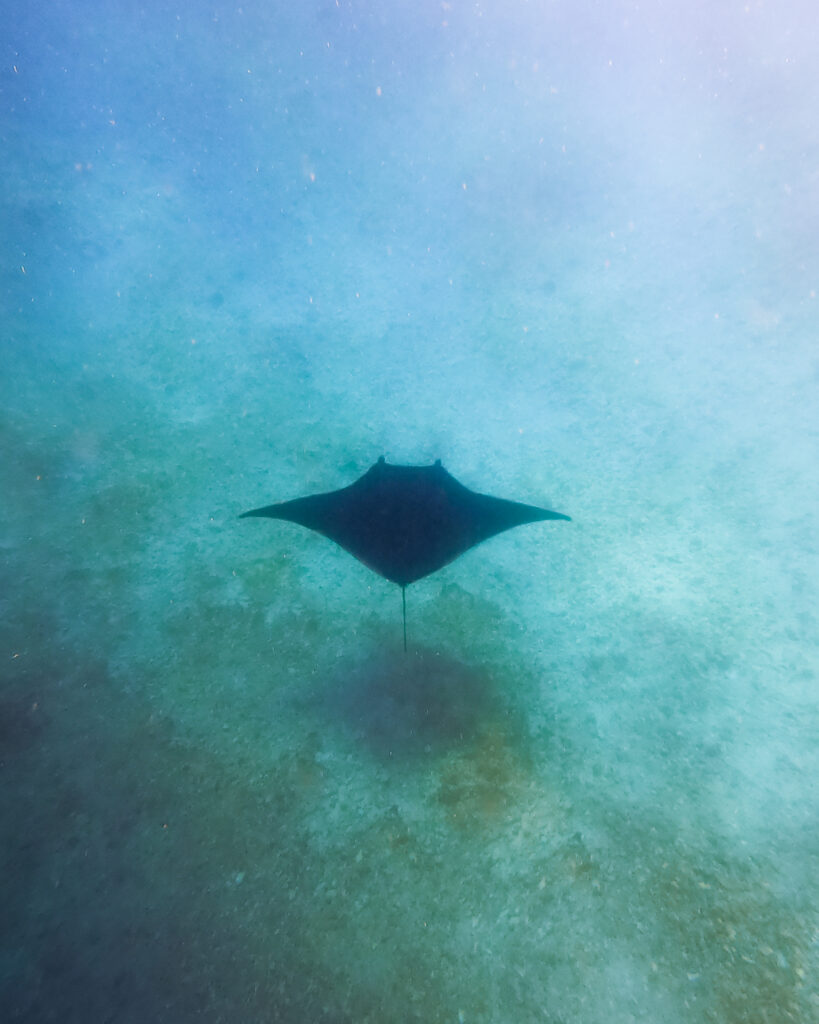
Right at the end of our dive while we were doing our safety stop, another solo manta swam right at us out of the blue. When it was only a couple of meters away from us, it finally turned off to the side, making a massive sweeping motion with its jet-black wings. I’ve never been so exhilarated in my life. This was by far my favorite moment in Komodo.
Snorkeling at Manta Point
If you’re not a scuba diver, never fear! Most sightseeing trips leaving Labuan Bajo offer plenty of chances to snorkel and swim.
Honestly, Komodo snorkeling is great no matter where you are in the national park. It’s amazing how much life there is so close to shore. However, most people are dying to see mantas so snorkeling at Manta Point is usually on the agenda.
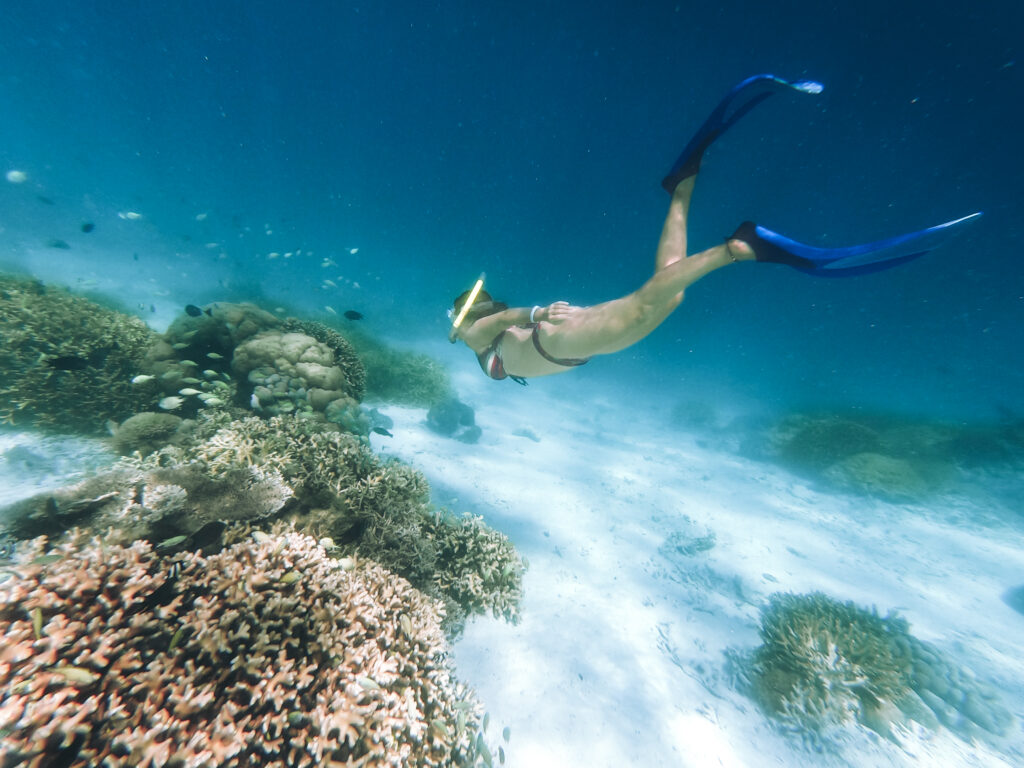
On our day trip, we jetted over to Manta Point in the early afternoon and met about ten or fifteen other boats there. All the tour operators stood at their best vantage points, scanning the water for dark shapes beneath the surface.
Although sometimes it can take up to an hour before someone spots on (or doesn’t,) we completely lucked out once again when a manta was spotted in only ten minutes! Equipped with masks, snorkels, and flippers, we all piled off the boat and proceeded to follow the manta from above as it cruised along the ocean floor. It felt sort of like a cross between a swimming safari and a wild goose chase.

As nice as it was to snorkel with the manta, it was crowded. I tried my best to dive down to get a little closer and avoid all the people. Many were swimming with life jackets on or completely unaware of their personal space, so it subtracted from the experience a bit.
Overall, I much preferred diving with the rays over snorkeling with them but what can I say, they were both amazing.
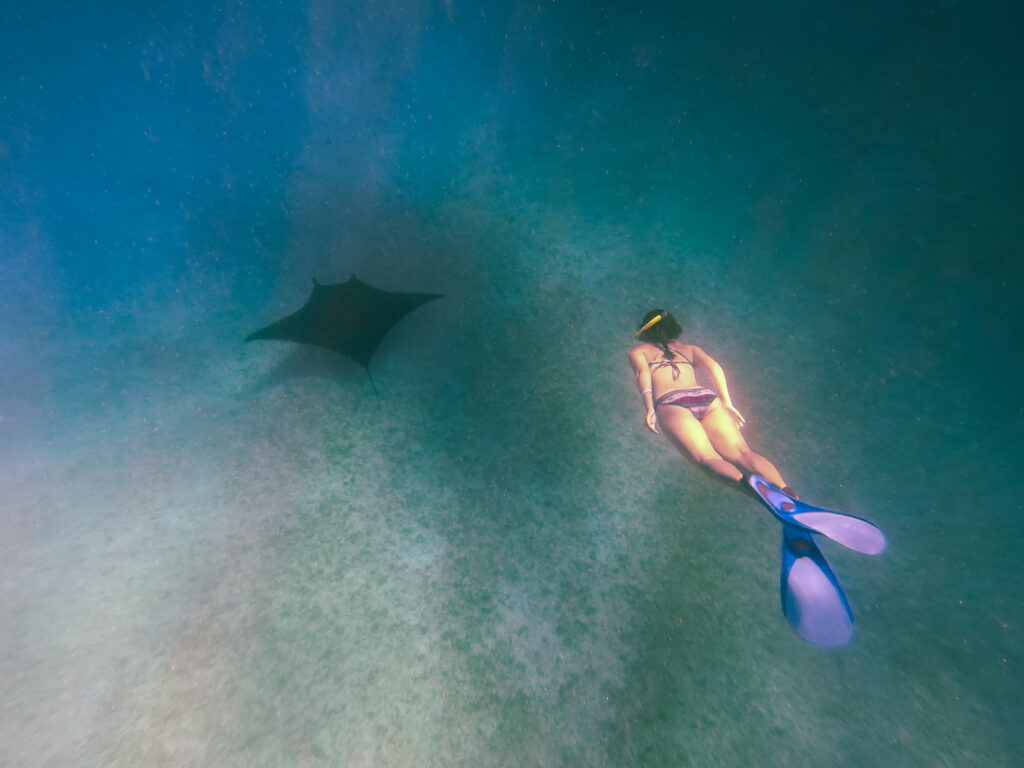
How to Maximize Your Chances of Seeing the Mantas
Nature is an independent force, so you can never be guaranteed anything, really. However, if you want to maximize your chances of seeing the mantas, there are a few things you can do.
First, talk to the people at your dive shop or to your tour providers. They live and work in the national park and have a good idea of how the currents, seasons, and other factors affect the manta rays. Komodo is big and it’s possible to see mantas all over the park, so ask them where and when you have the greatest chance of seeing them.
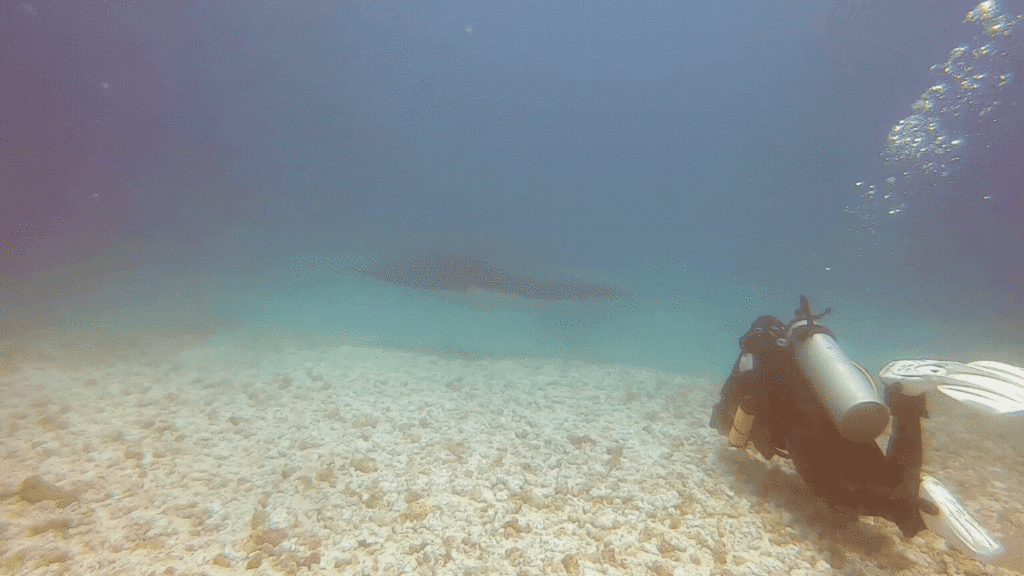
For example, our dive operator showed us the two different schedules for Saturday and Sunday and told us he’d be shocked if we saw a manta on Sunday because they weren’t even going to Manta Point that day. It was an easy decision for us to choose Saturday.
Second, increase your probability of seeing them by spending multiple days on the water in Komodo National Park. If you’re day-tripping to Manta Point, Labuan Bajo will be your departure point each day and you could do multiple trips. However, if you’re able, I’d highly recommend doing a liveaboard. Whether you’re diving or just sightseeing, a liveaboard is the absolute best way to see Komodo. Plus, if you miss the mantas one day, you can try again tomorrow.
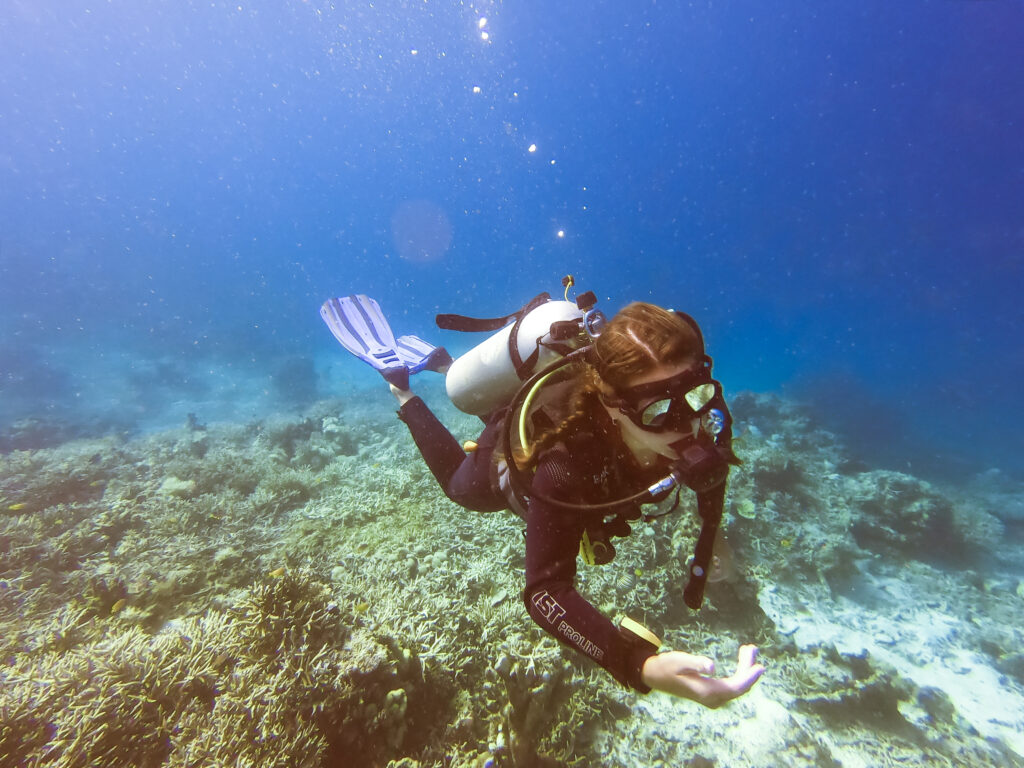
Half the fun of visiting this corner of the planet is seeing the amazing manta rays Komodo is so famous for. Your trip to Indonesia isn’t complete without them, and scuba diving at Manta Point, Komodo is by far the best way to see them. It’s not an exaggeration to say that swimming with them was one of my favorite experiences in my entire life!
June 11, 2020